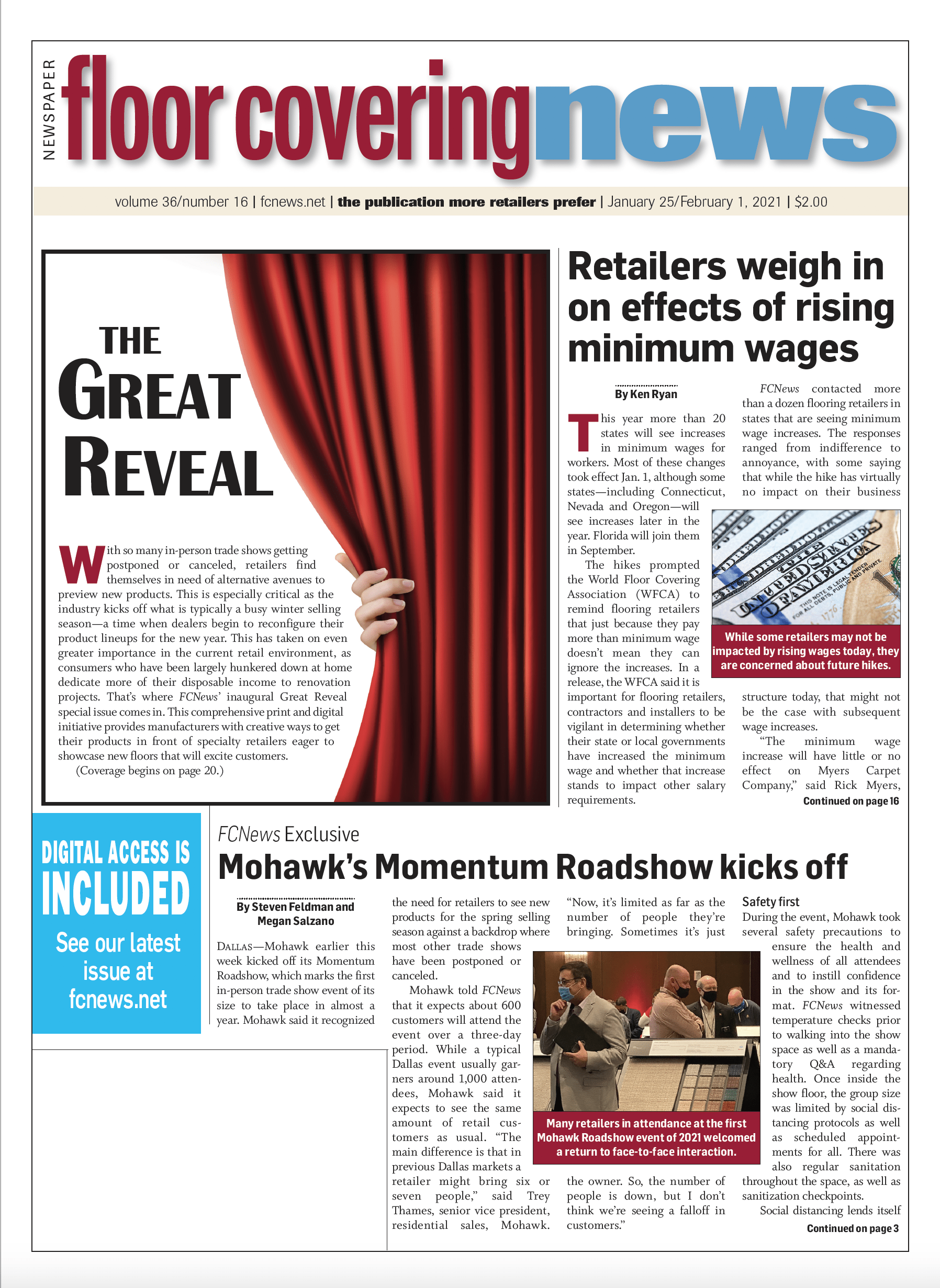 By Jason Spangler When a flooring failure occurs, one of the most common culprits is excess moisture. That goes for all types of flooring—yes, even waterproof flooring. Most people have a good understanding of the moisture-related risks associated with certain flooring materials. Wood, for example, readily absorbs moisture from its environment and is subject to warping, cupping, buckling, mold and mildew growth as well as other serious moisture-related issues.
By Jason Spangler When a flooring failure occurs, one of the most common culprits is excess moisture. That goes for all types of flooring—yes, even waterproof flooring. Most people have a good understanding of the moisture-related risks associated with certain flooring materials. Wood, for example, readily absorbs moisture from its environment and is subject to warping, cupping, buckling, mold and mildew growth as well as other serious moisture-related issues.
What about popular materials that are considered waterproof, such as vinyl plank flooring? If it is waterproof, there must be nothing to worry about, right? This might be true for water spilled on the floor’s surface. However, water lurking underneath the floor may be another matter entirely.
Case in point: If a waterproof flooring product is installed over a concrete floor slab, a surprising amount of moisture may still be in the substrate. That’s because water is one of concrete’s most essential ingredients and is always added before the initial pour. Water gives concrete its characteristic strength and durability. As the concrete slowly dries after being poured—a process that can take many months—moisture evaporates from the slab’s surface. This drying process creates a moisture gradient with more deep down within the slab than what’s at the surface. The result? A concrete slab deemed “dry” on the surface could be holding a lot of moisture inside.
When you install a flooring material that’s billed as waterproof, the water inside the concrete slab has no place to go; it’s essentially trapped. Over time, the water will tend to rise to the slab’s surface to evaporate—except, it can’t. A waterproof flooring product will serve as an impervious layer that won’t allow moisture to escape. Trapped underneath the waterproof floor, the moisture is left to interact with flooring adhesives and/or the finished floor itself. If the moisture is substantial, a flooring failure such as cupping, debonding of glue or adhesives, mold, mildew and other issues could be the inevitable and disastrous result. Even if the flooring isn’t waterproof, it’s likely to slow down the evaporation of moisture from the surface, so it will have a similar effect.
Fortunately, it’s quite easy to avoid these common moisture-related issues. The key is to pay attention to the possibility of excess moisture before the flooring is installed. If the subfloor is concrete, always conduct a moisture test to evaluate the overall moisture condition of the slab. Never assume it’s unnecessary to follow standard practices of testing simply because you plan to install waterproof flooring. That could be a huge and costly mistake.
It’s also important to carefully consider which type of concrete moisture test you will perform. The two most common are the in-situ relative humidity (RH) test and the anhydrous calcium chloride test. But only one has been shown to be consistently accurate and reliable: The RH test, which utilizes small RH sensors that are placed in test holes at 40% of the depth of the slab. Studies have shown that readings at this depth give an accurate indication of the amount of moisture the installed floor will see once the moisture inside the slab equilibrates. Using the RH test gives a full assessment of the slab’s true moisture condition within 24 hours.
To ensure an informed decision about when to install, RH test results should always be compared to the manufacturer’s specification for the flooring product in question.
Jason Spangler is sales manager for Wagner Meters. He has more than 25 years’ experience in sales and sales management across a broad spectrum of industries.

